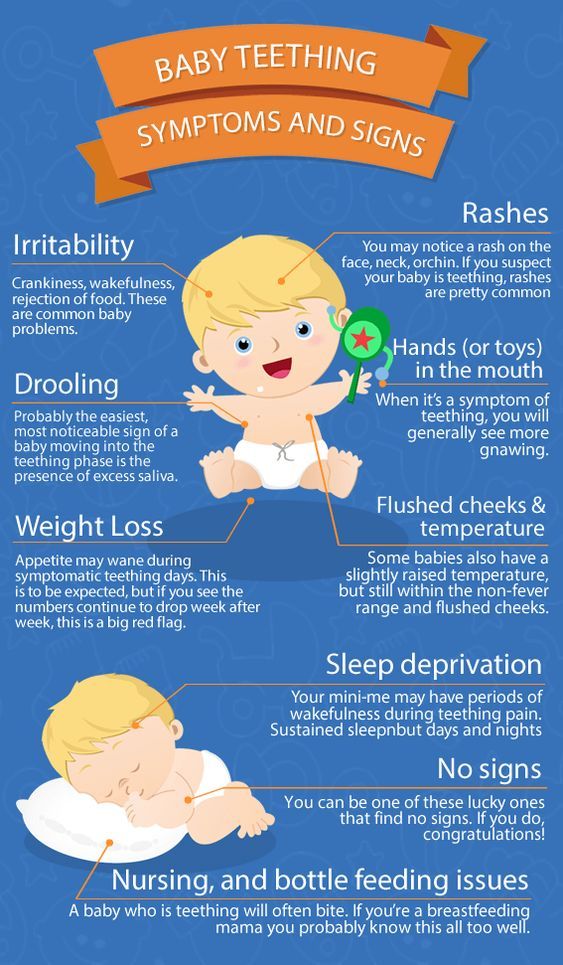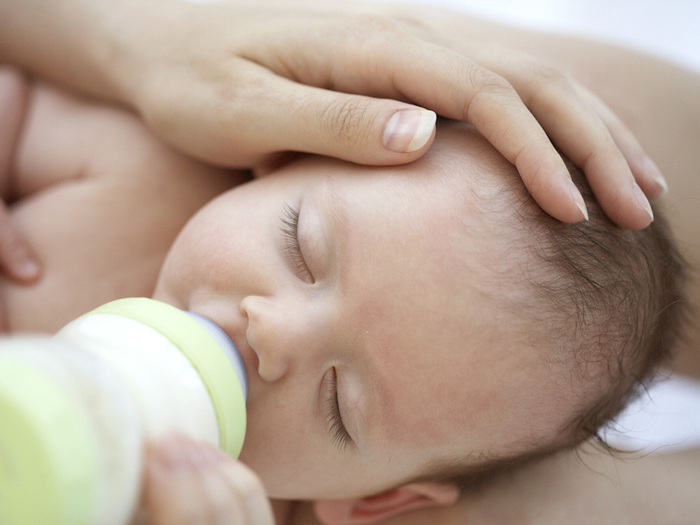Tips for getting baby back to sleep after night feed
Your Baby Won't Go Back to Sleep After Night Feeding? Try These Solutions...!
At last, baby is asleep and you can finally get yourself some zzz’s.
Now the pillow is softer than ever, and the bed is suddenly sooo relaxing, and a bit of sleep is very much appreciated.
You’ve barely had the chance to doze off and next thing you know, you hear that soft to shrieking cry of hunger.
You quickly get up in the wee hours, give breastmilk or bottlefeed, and plan to sleep again… but baby won’t go back to sleep after night feeding!
You know it’s going to be another long zombified night.
Those who have a mellow baby who delightfully breastfeeds by day and predictably sleeps 4-6 hour stretches once it gets dark may be lucky.
A number of parents, however, are blessed with a high-need newborn not settling after night feeds.
Baby is cared for throughout the night, yet still requires lots of nourishment and comforting when the sun’s up.
Eventually, these parents eventually find themselves screaming ‘HELP! My baby won’t settle after night feed!’
Is your baby giving you the run for your money?
During this phase when you’re still recovering from childbirth, lack of sleep can make you feel exhausted, bleary and helpless. A few months of clocking up only 1-2 hours of sleep a night, it becomes worse.
Trust me, I know. The cry for ‘HELP!’ progresses to my baby. Some dads who are involved as far as bottle feeding or burping even said they thought they’re going to die!
The great, strong mom that YOU are, you will surely survive.
Nobody said it was easy, but nighttime feeding cycles can definitely become more manageable. In fact, it can be made enjoyable with these tips and tricks below.
Tips for Babies Who Won’t Go Back to Sleep After Night Feeding
Be Wary of Sleep Disruption
Some people wake up their sleeping child when feeding time is due. Not letting your baby develop his or her own sleep patterns will only lead to more problems.
Truth is, the more your baby sleeps, the more he will sleep. You can do the math when you get more for yourself.
Decide Where Baby Sleeps
Learning how getting baby back to sleep at night also entails openness to various sleeping arrangements.
Most infants love to snuggle with mommy, perhaps beside daddy, while some sleep better in their cot. Find the right solo or co-sleep combo that promotes a faster transition and longer sleep.
Tank Up with Frequent Day Feedings
Babies get busier as they grow, and actually, forget to eat! Instances often occur at 6 months of age.
They instead wake up and make up for missed feedings, and it could be at different times every single night.
Mom then can be the one to remind baby to nurse at different intervals during the day, such that baby won’t need to nurse as much as night.
Create The Ideal Room Environment
The brain becomes more alert when exposed to bright lights, thus making it difficult to go back to sleep.
Nighttime feeding is best done in a room with dim lights, minimal noise, and a comfortable temperature. Well, this should be the exact setup of your baby’s sleep space is the first place.
You can also read this article about baby light show projectors, because many parents share your experience and many of them are happy with the light show projector in the baby room… read this review here!
Pick the Right Time For A Change
When baby won’t go back to sleep after night feeding, avoid changing diapers at all costs! Do it right before bedtime and use one with extra absorbency feature and less risks of leaking.
Whenever necessary, change before a feeding but it’s generally best to leave the diaper on (unless it is soiled) until the next feeding.
Keep Calm and Burp
Once done feeding at night, lift baby up and do the non-stimulating burping technique. Firm and soft back strokes should be enough to get your baby to burp.
After 5 minutes and it doesn’t come up, no worries. It’s alright to put him or her back in the crib to get much needed sleep.
In the video below, Gladys Ellett shares some good burping techniques
Maintaining Contact
After your baby has fed long enough and the short burp time is up, wrap him or her in a blanket or swaddle snugly to stay warm.
Now put your child down. If you still see baby wide awake after night feeding, try patting or putting your hand close to your child.
Instead of lifting which tends to stimulate, even make baby cry hysterically when laid down awake, your loving touch will offer assurance until he dozes off.
Make Do Without A Sleep Prop
An important factor of why baby wakes up at night and won’t go back to sleep is sleep associations.
The prop, whether an object or person or action such as rocking or swinging or nursing, is what baby needs to fall asleep.
Most of us would have our baby close to our heart in a sling as we gently pace the floor and rock him gently to sleep.
Naturally, baby would expect the same prop in order to get back to sleep after feeding.
The solution is to support them with various sleep associations to prevent attachment to one, then ultimately letting go which will give you and your baby a whole lot more of normal sleep.
Laying Out The Master Plan
A happy mother and a well-fed, nurtured baby is all that matters.
Sleep deprivation won’t contribute to having a better perspective and understanding of why baby won’t go back to sleep after night feeding.
In the meantime, jump back into bed soon as baby falls asleep, with no time to waste!
The key is to catch up and execute a plan.
It doesn’t matter if your bundle of joy is merely an infant, has grown into a 5-month baby who refuses to sleep afterward after every session, or one who still wakes up at night at 18 months old.
It’s never too late to foster better sleeping habits by implementing some of the aforementioned strategies.
You’ll be delighted to see your baby become more engaging, patient, tolerant, less fussy and cranky after a quality nap.
9 Amazing Baby Sleep Tips for Night Waking
I hope you find these baby sleep tips for night waking helpful! When my son was first born, I had the whole night waking thing all wrong. There I was in the middle of the night with all the lights on, eating some crunchy snack, and watching horrible late night reality TV in the midst of feeding my baby.
post contains affiliate links
After all that, I would change his diaper and try putting him back to bed. For the life of me, I struggled to understand why he wouldn’t go back to sleep.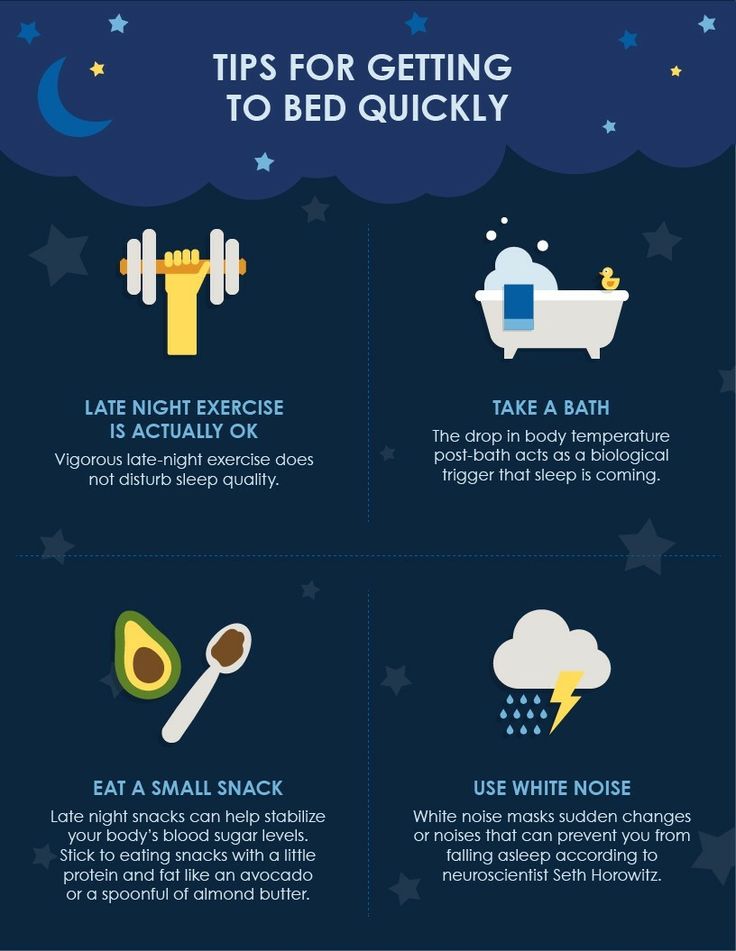 Didn’t take me long to learn that I was doing the exact opposite of these baby sleep tips for night waking.
Didn’t take me long to learn that I was doing the exact opposite of these baby sleep tips for night waking.
If you are looking for some quick and easy ways to help your baby settle to sleep easier after a night feed, try out these tips!
1. Keep it all business.
Keep your night time routine to the basics only. Night time is no time for a party. Getting a brief nighttime routine down works wonders. Ideally, we are talkin’ diaper change, feeding, burb, back to crib.
2. Keep all the lights off.
As a night shift nurse, I was accustomed to working in the dark to avoid waking patients. So as a mom, you think this would’ve clicked before someone had to tell me this tip. Use only a night light go through your nighttime baby sleep routine.
If you can use a red night light like this Gummy Bear one, even better! Red light doesn’t emit rays that tell your brain to wake up vs. a blue or white night light.
3. Change the diaper before the feeding.
I’m a huge advocate for laying a baby down awake but drowsy to help him or her learn to fall asleep independently; however, I never worry about this during night wakings. I always nurse / bottle feed my babies back to sleep in the middle of the night.
I always nurse / bottle feed my babies back to sleep in the middle of the night.
As soon as you go to your baby, change the diaper…sometimes I even skip it altogether!
If your baby is a newborn sometimes they will poop after a night feeding. In this case, of course, you need to change the diaper after the feeding, but usually after their digestive system settles down after the first month or two, you will be able switch the diaper change before the feeding or simple change the diaper ever other night feeding.
4. Avoid eye contact.
I’m serious 🙂 Avoid all eye contact, talking, singing, excessive motion, and anything else you can think of. Basically, avoid as much stimulation as possible with your baby during the night. Again, keep it all business.
5. Hands on chest.
After the feeding and burp, lay your baby down in the crib. If your baby fell asleep during the feeding, that’s great. If your baby is still awake or sleeping lightly, hold your hand on your baby’s chest for a few minutes.
Gentle pressure can offer comfort and reassurance for your baby to settle down a bit. Remember, it can take up to 20 minutes to reach deep sleep. So don’t be afraid to wait a few minutes until you sense your baby is settled. I’m not patient enough to wait 20 minutes, but I would say 5 minutes could do the trick.
6. Early bedtime.
I was totally surprised by how much babies sleep when they are little. I had it totally wrong trying to keep my son awake in order to wear him out.
An overtired baby sleeps less, not more, and an early bedtime can help a baby sleep better during the night.
Don’t hesitate to try a bedtime between 6:30 pm and 7:30 pm to improve a baby’s overall sleepiness throughout the night. For more on finding a sleep schedule that works, check out For the Love of Sleep eBook.
You can also use these baby bedtime routine cards to help your baby settle in the evenings…
7. Use a diaper one size too big.
This is one trick I use from infancy through the toddler years.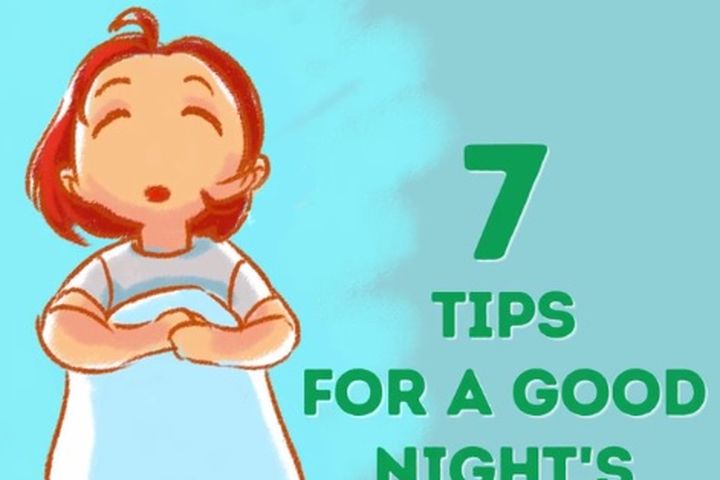 Whatever size diaper your child wears, use the next size up during the night. You’ll sleep better knowing your baby isn’t sleeping in a wet mess and so will your baby.
Whatever size diaper your child wears, use the next size up during the night. You’ll sleep better knowing your baby isn’t sleeping in a wet mess and so will your baby.
8. Start shushing.
Don’t be afraid to shush the baby. My husband is an expert at shushing. He always shushed our babies to sleep. White noise is very calming for babies, especially after hearing it for 9 months in the womb.
Shushing seems overly simple, and I would be totally annoyed if someone did that to me, but babies are different. They like it.
If you get tired of shushing {waives hand wildly} then you’ll love this baby sleep machine.
9. Follow your instincts.
Always do what you are comfortable with when it comes to your child and a sleep plan. If you end up doing something that you feel uncomfortable with, it will likely lead to inconsistency and guilty feelings. Ultimately, neither of those things will lead to better sleep in the long run.
Print your free baby sleep checklist!
This post comes with a free printable baby sleep checklist to help you support longer stretches of sleep for your baby! Plus, when you grab this printable, you’ll get instant access to my free 3-day baby sleep eCourse.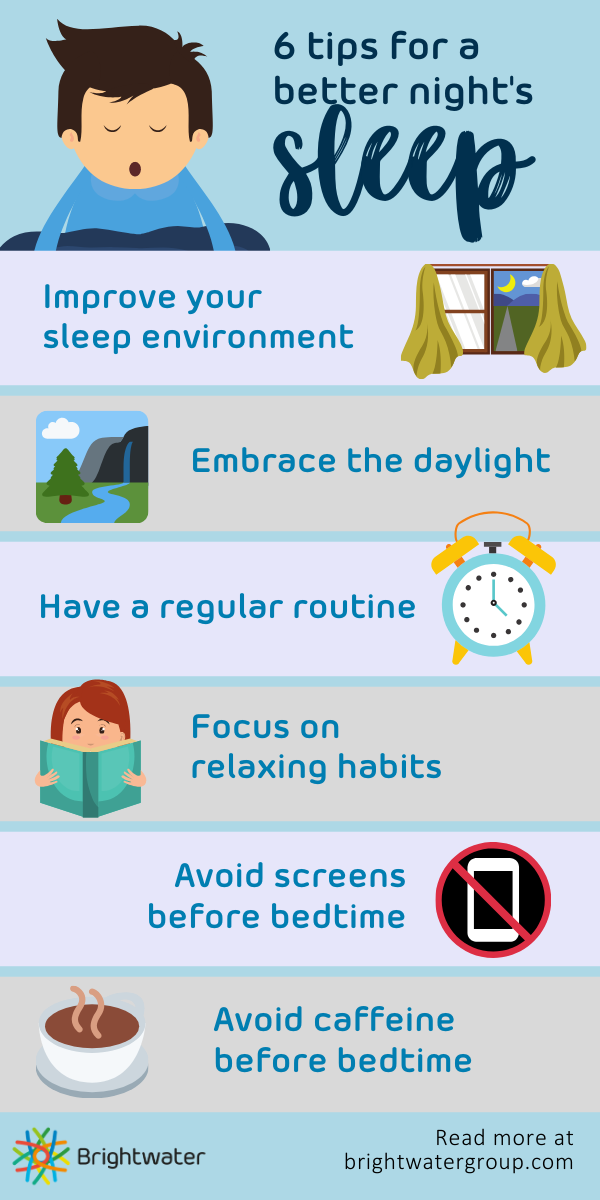
Download Your Free Printable
- Download the checklist. You’ll get the printable straight to your inbox, plus get my Free 3-Day Baby Sleep eCourse!
- Print. Any paper will do the trick, but card stock would be ideal.
- Place it on your refrigerator. Use it as a quick reference and don’t forget a thing!
Want more on baby sleep?
- My Top 10 Newborn Baby Sleep Tips To Help You Get More Sleep
- The Newborn Routine That Will Help Your Baby Fall Asleep Faster
- Top 7 Challenges + Solutions for Parenting a Newborn and Toddler
- 8 Infant Sleep Facts Every Parent Should Know
Resources for baby sleep:
- Baby Sleep Routine Printable Bundle + For the Love of Sleep eBook
I've created a free email series just for you! If you are struggling with finding a routine, rhythm or schedule, this email series will help you find one that will work for YOUR family. Yes, really. I've seen my sample routines work time and time again for parents. I know it can work for you too.
Yes, really. I've seen my sample routines work time and time again for parents. I know it can work for you too.
This free email series will help you:
- Free sample routines for your child
- Best morning routine tips and tricks your kids will actually follow
- All-time favorite parenting hacks for getting more cooperation at bedtime
- Step-by-step guide for using a printable daily schedule with kids
Click here to sign up!
Are you new to this community? Start here, friend.
Putting the child to sleep: useful tips and recommendations
Author, editor and medical expert - Muraeva Yulia Yurievna.
Views: 195 704
Last update date: 06/23/2022 G.
average reading time: 12 minutes
Content:
Rhythm of children's sleep
How to properly laid it out properly sleep baby
How to help your baby sleep
How to teach a child to sleep in his own crib?
Bedtime rituals
What are the bedtime rituals?
Sleep is an important part of life, so it must be regular and of high quality 1 . But often the first year of a child's life becomes a real test for parents. Even such a seemingly simple action as putting a newborn to sleep sometimes turns into a task of increased complexity.
But often the first year of a child's life becomes a real test for parents. Even such a seemingly simple action as putting a newborn to sleep sometimes turns into a task of increased complexity.
The difficulty is that in infants, sleep is still being formed, and circadian rhythms differ from those to which parents are accustomed 2 .
Rhythms of baby sleep
Before birth, the alternation of sleep phases in the fetus is subject to circadian (daily) rhythms and fluctuations in the hormonal background of the expectant mother. After giving birth, it takes time for the child to mature its own regulatory system 2 .
A term newborn sleeps an average of 16-17 hours 2 , and the total duration of sleep is not affected by dark and daylight hours 3 .
Babies up to 2 months have 2 sleep phases 2.3 :
- Active sleep. Starts after falling asleep. This phase is important for the stimulation and development of the central nervous system.
 During active sleep, you can observe the baby's mobility, rapid eye movements and a weakening of reactions to external stimuli (light, sound, touch).
During active sleep, you can observe the baby's mobility, rapid eye movements and a weakening of reactions to external stimuli (light, sound, touch). - Peaceful sleep. Follows the active phase. During restful sleep, the heart rate slows down, the movements of the eyeballs stop, and the baby stops moving his arms and legs.
Together these 2 phases form a cycle. Each cycle begins with active sleep followed by restful sleep. The duration of such a cycle is approximately 45-60 minutes 3 .
But the sleep-wake cycle lasts longer. For breastfed babies, it is approximately 1-3 hours, and for artificial babies, it is 2-5 hours 3 .
Gradually lengthening periods of wakefulness, and most of the sleep occurs at night 2 :
- By the end of 3 months of life, an uninterrupted night's sleep can be about 5 hours 3 .
- From 2 to 12 months, babies sleep 9-10 hours at night 3 , while daytime sleep is divided into 1-4 episodes that can last from 30 minutes to 2 hours 3 .

Sleep regularity and sleep disturbances can be assessed after 6 months, when the child develops circadian rhythms 3 .
Although the night sleep becomes longer, each cycle is still accompanied by micro-awakenings (wakings) 2.3 , after which the baby can fall asleep quickly enough. This is a short-term activation of the central nervous system, which must be distinguished from a full awakening 2 . It is good if at this moment the mother is nearby and helps the child fall asleep again.
Back to Contents
How to Put Your Baby to Sleep
The American Pediatrics Association has developed guidelines for safe sleep for babies. Below are some of them (the full list of recommendations can be found at the link) 4 :
- The best sleeping position is on your back.
- The mattress should be hard enough, and the crib should not be cluttered with things, blankets, pillows.
- No smoking in the nursery.
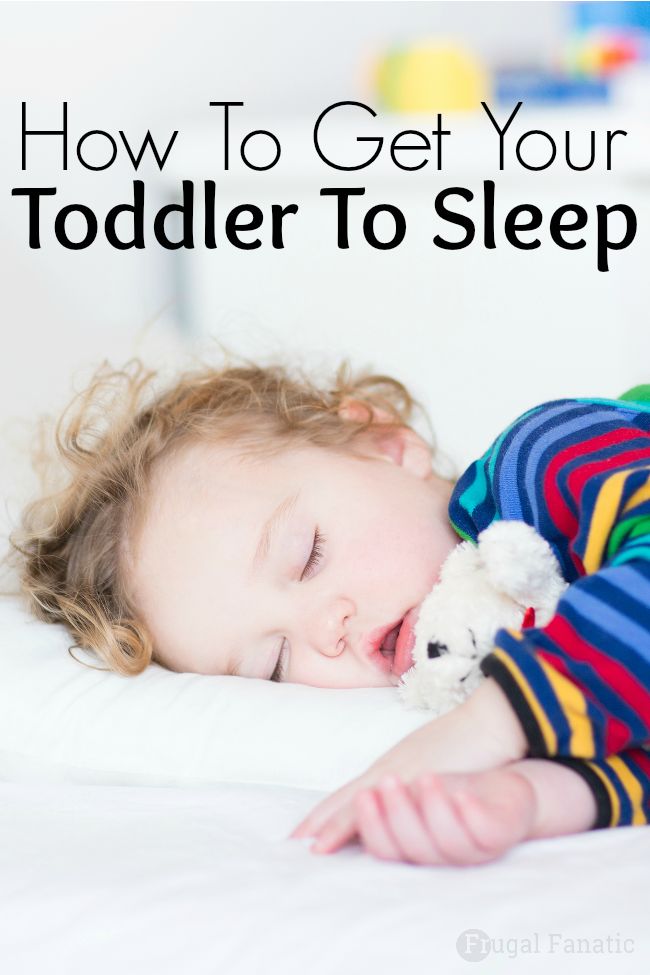
- If the child sleeps in a cool room, it is better to dress him warmly or put him in a special sleeping bag for babies. He should be warm, but not hot, so it is not recommended to wrap him with a blanket. And in order for the baby to breathe freely, in no case cover him with a blanket with his head.
Babies up to 12 months of age still need to feed at night, so sleeping in the same room with the mother may be necessary to optimize breastfeeding and closer contact 4 . Co-sleeping in the same room with parents does not mean that the child will sleep with them in the same bed, because it does not meet the safety requirements 4 .
Before putting your newborn to bed, also remember that:
- Tight swaddling is not recommended0036 4 . There are babies who find this soothing, but swaddling can interfere with the baby's breathing because the chest is compressed and the baby cannot take a deep breath.
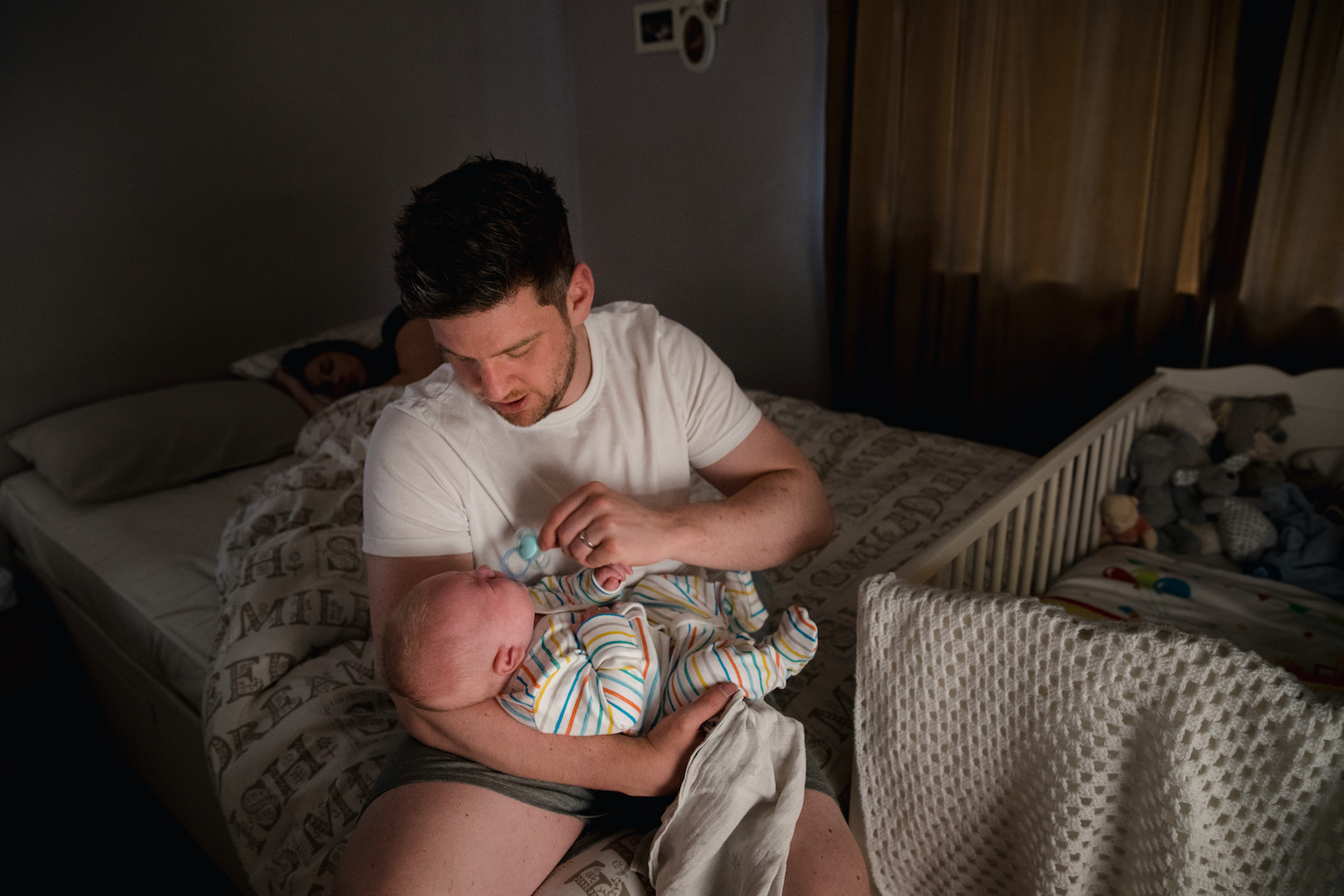 4 . Tight swaddling also increases the risk of a lung infection and can aggravate hip dysplasia. Do not swaddle a baby who is already rolling over from his back to his stomach 4 .
4 . Tight swaddling also increases the risk of a lung infection and can aggravate hip dysplasia. Do not swaddle a baby who is already rolling over from his back to his stomach 4 . - There is no consensus on the use of pacifiers. Some experts believe that they have a negative effect on breastfeeding and interfere with the formation of the correct bite. Other evidence suggests that pacifiers help reduce the risk of respiratory and cardiac problems in infants up to 12 months of age 4 .
- Don't encourage falling asleep in your arms or while feeding. Older babies do not need to be allowed to fall asleep while watching a movie, after a set time, or in their parent's bed 4 .
Back to content
How to help your baby fall asleep
As the baby develops, fears, anxiety, anxiety may appear when he refuses to sleep separately from his parents and resists falling asleep 2 .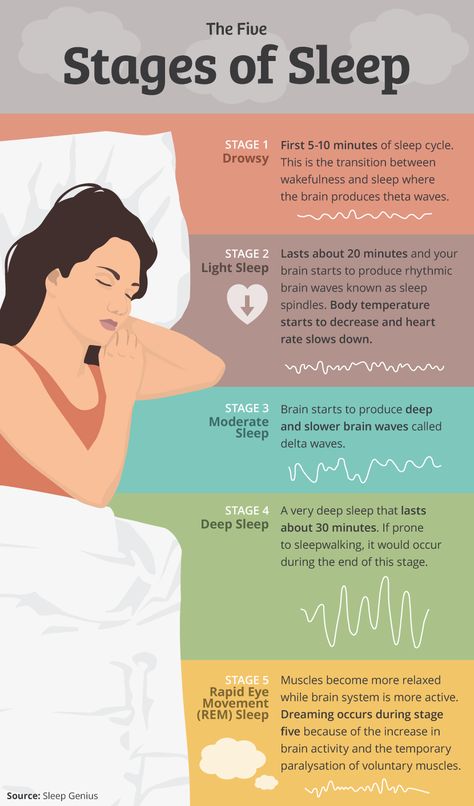 The maturation of biological rhythms is facilitated by the environment of the child, the behavior of parents, compliance with the regimen and rules of sleep hygiene 3 .
The maturation of biological rhythms is facilitated by the environment of the child, the behavior of parents, compliance with the regimen and rules of sleep hygiene 3 .
To ensure quality rest and proper development, parents need to follow the recommendations. Specialists advise following these rules 4 :
- Put the baby to bed in the evening and wake up in the morning at about the same time, despite weekends and holidays 4 .
- Avoid physical activity before bed 4 .
- Limit activities in bed that are not related to falling asleep (playing, feeding), as this interferes with the baby's understanding of sleep 4 .
- Keep the bedroom comfortable - moderate temperature, low lighting, minimal noise, comfortable pajamas 4 .
- Form a laying ritual 5 .
- Follow the diet - the baby should not have any hunger or overeating. Before going to bed, you can feed him a little 5 .

- Keep an activity diary so that you can analyze and understand what interferes with your child's sleep 4 .
Back to Contents
How can I get my baby to sleep in his own crib?
There are various methods to help a child fall asleep on his own, without the help of parents. They are often used as a non-drug treatment for insomnia (sleep disorder) in young children aged 1 to 3 years 4 . Examples of such techniques are described below. Choosing the right one for your baby should be discussed with a baby sleep specialist.
One way to overcome sleep disorders is through behavioral therapy. It helps to change wrong associations and sleep patterns in a child 4.7 . In behavioral therapy, the abandonment method is used. With him, parents immediately leave the child in the crib and leave the nursery. However, they do not return when they hear his cries or call, giving him the opportunity to fall asleep on his own 4 . But psychologists do not recommend using this approach if the baby is not yet 6 months old and is breastfeeding 4 , as this may adversely affect the baby's condition.
But psychologists do not recommend using this approach if the baby is not yet 6 months old and is breastfeeding 4 , as this may adversely affect the baby's condition.
In addition, the abandonment method is not suitable for all parents. For those who want to be near or calm a crying baby 4 experts recommend other methods - "check and hold" or "gradual repayment" 4.7 .
Back to Contents
"Checking and Holding"
When getting ready for bed, the parent spends some time with the child, then puts him to bed and leaves the room or goes to bed if she is in the nursery. At the same time, they do not approach the baby for 15-20 minutes and do not react to his crying or screaming. This period is called "hold" 7
When the 20 minutes have elapsed, the parent goes to the child, straightens his bed and returns to himself. This part is called checking 7 .
It is very important not to take him out of the crib and feed him when he wakes up.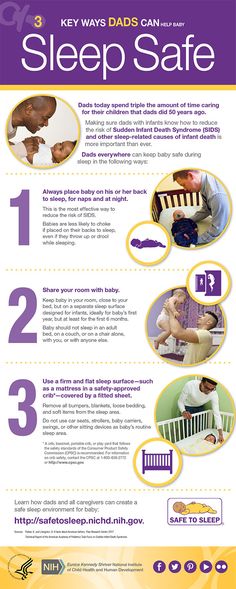 The exception is children who require night feedings for age or medical reasons. In all other cases, the parent simply comes to the crib for a short time to check, and then leaves again for a 15-20 minute “hold” 7 .
The exception is children who require night feedings for age or medical reasons. In all other cases, the parent simply comes to the crib for a short time to check, and then leaves again for a 15-20 minute “hold” 7 .
Gradually - over several nights - increase the "hold" interval to 30 minutes 7 .
Up to content
Gradual repayment
This technique is designed to “repay” the child's protests and manipulations 7 . There are 2 options for "gradual repayment" - with and without the presence of a parent 4 .
The classic option is to leave the baby alone in the bedroom for a certain amount of time, gradually accustoming him to fall asleep on his own. Unlike the “check and hold” method, the child can be calmed down. But you need to return to his bed not at the first call, but after a certain time. After the child calms down, you need to leave again, increasing the intervals when he tries to fall asleep without you 7 . This option is suitable for babies over 6 months old 4 .
This option is suitable for babies over 6 months old 4 .
Until the age of six months, use the “gradual repayment” method in the presence of a parent. It is carried out in stages 4 :
- The parent puts the baby to bed and sits next to it. If the bed is large, you can lie down next to the child.
- On subsequent nights, mom or dad still stays close to the baby, but gradually reduces the number of touches, communicates less with him, showing him that they are busy with something, for example, reading or cleaning the room.
- When putting the child to bed, the parent does not lie down next to him, but sits on a chair not far from the bed, about 5 meters from it, continuing to sit until the baby falls asleep.
- In the next step, the distance between the bed and the chair is increased by gradually moving it away.
- A little later you can leave the nursery for a while, but be sure to return before the baby cries.

If the child wakes up, repeat the same steps that you perform at this stage of the procedure. The stages can be stretched over several days so that the baby has time to get used to each 4 .
Up to contents
Bedding rituals
Forming a bedding ritual is considered to be an effective method 4 . It can complement the "repayment" technique, but sometimes it works quite well on its own. Suitable for all ages, but the earlier it is started, the less likely babies are to develop sleep problems - they fall asleep faster and sleep longer 4 .
The ritual begins at the moment of the child's drowsiness. Before you put the baby to sleep, you need to perform a number of actions. They should be predictable, regular, relaxing and positive. The total duration of the ritual is 20-45 minutes 4 . If it was not possible to meet the set time, most likely, you need to shift the ritual to another time and wait for drowsiness.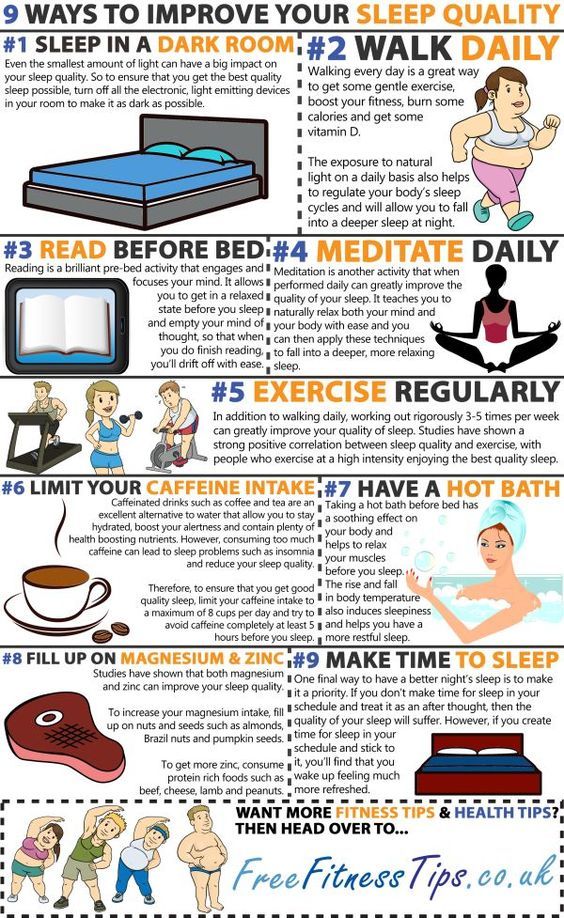 It can manifest itself as loss of interest in surrounding toys and people, reddening of the eyelids, rubbing of the eyes, yawning 4 .
It can manifest itself as loss of interest in surrounding toys and people, reddening of the eyelids, rubbing of the eyes, yawning 4 .
Back to Contents
What are the rituals for falling asleep?
Experts recommend preparing for sleep, which consists of consecutive, daily repeated actions, the so-called routines 5 . They help to speed up falling asleep, increase the quality and duration of sleep, reduce the number of night awakenings 5 .
The most typical nightly rituals 6 :
- Bathing in warm water with your favorite foam or bath product, light massage.
- Soothing sounds - "white noise". This is a monotonous noise that does not carry a semantic load, soothes and helps to forget, for example, flowing water, a metronome, ticking clocks or recordings of nature sounds.
- Lullabies and fairy tales.
- Wishes for "good night", "sweet dreams" or other phrases that are said only before going to bed.

Sleep experts recommend a three-step ritual that includes bathing, massage and quiet time in the crib 8 .
- Bath foam can be used during bathing. For babies from 6 months, JOHNSON’S ® Baby Bath Foam "Before Bed" is suitable. It has a soothing scent to help your baby get ready for bed 8 .
- Immediately after a warm bath, a milk can be applied to the skin, such as JOHNSON’S ® Bedtime Milk 8 , for children over 6 months of age, by lightly stroking the skin. Such a massage will calm the baby even more and prepare him for sleep, especially thanks to the pleasant smell of milk 8 .
- At the third stage, you need to change the child into pajamas, read a bedtime story or sing a lullaby 4,8 .
As a rule, a few days are enough to form an association between the evening routine and falling asleep 4 .
As you can see, pediatricians and psychologists have developed various methods for healthy children's sleep and fast falling asleep. But you need to use them, taking into account the age of the child, his habits and characteristics of the nervous system. The task of parents is to organize the baby’s daily routine and prepare him for sleep, calming and creating positive associations with the process of falling asleep. With the correct implementation of the recommendations of a specialist, the child will gradually learn to fall asleep independently and faster, will sleep longer and sounder.
You may also be interested in:
Traveling with your baby
Baby's Skin Care Guide
Back to Contents
The information in this article is for guidance only and does not replace professional medical advice. For diagnosis and treatment, contact a qualified specialist.
References:
- E.S. Sakharova. What worries the baby? Pediatric pharmacology, 2010, volume 7, No. 2, pp. 143-148.
- I.A. Kelmanson. Formation of the state of sleep in ontogeny and the problems arising from this.
 Neurology and psychiatry. Special issue "Sleep and its disorders-5". Effective pharmacotherapy, 2017, No. 35, p.4-13
Neurology and psychiatry. Special issue "Sleep and its disorders-5". Effective pharmacotherapy, 2017, No. 35, p.4-13 - M.G.Poluektov, P.V.pchelina. Sleep in children: from physiology to pathology. Medical Council, 2017, No. 9, pp. 98-103.
- P.V.Pchelina. M.G.Poluektov. How to treat insomnia in early childhood. Neurology and psychiatry. Special issue "Sleep and its disorders-4". Effective pharmacotherapy, 2016, No. 19, pp.52-60.
- Jodi A. Mindell, PhD; Lorena S. Telofski, BA; Benjamin Wiegand, PhD; Ellen S. Kurtz, PhD. A Nightly Bedtime Routine: Impact on Sleep in Young Children and Maternal Mood. (The Nightly Sleep Schedule: Effects on Young Children's Sleep and Maternal Mood) SLEEP (Sleep), Vol. 32, no. 5, 2009. pp. 599-607.
- E.A. Korabelnikova. Treatment and prevention of insomnia in young children. Russian Psychiatric Journal, 2012, No. 3, pp. 62-70.
- M.G. Poluektov Sleep disorders in childhood: causes and modern therapy // Effective pharmacotherapy, Neurology and psychiatry.
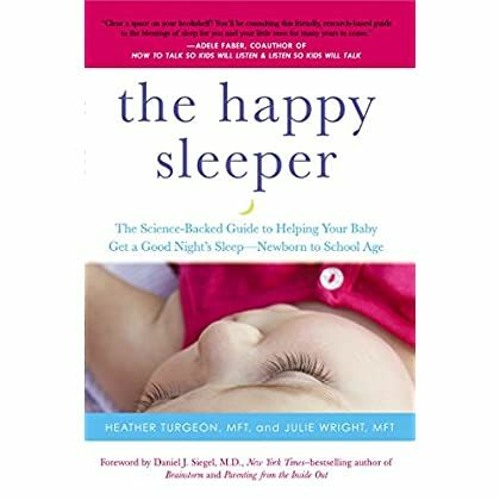 1/2012
1/2012 - Mindell J, Lorena S, Telofsky BA et al. Nightly sleep routine: effects on young children's sleep and maternal mood. Sleep. 2009; 23:599–606.
Back to Contents
15 tips for getting ready for bed quickly and easily
How to put a child to sleep without tears, without performing a feat of patience and endurance? There are scattered tips and complex author's methods. But each parent creates his own ritual, watching the newborn, getting to know his temperament. Consider all the components of sleep and important details so that you enjoy spending the evening hours with your baby and fall asleep quickly and peacefully every time.
How much time does a child need to sleep?
In the first six months of life, children sleep most of the day - from 16 to 18 hours. Further, the total number of hours of sleep is gradually reduced (at the age of one to three years - about 13 hours), and the number of daytime hours (already at the age of three, the baby sleeps only once during the day).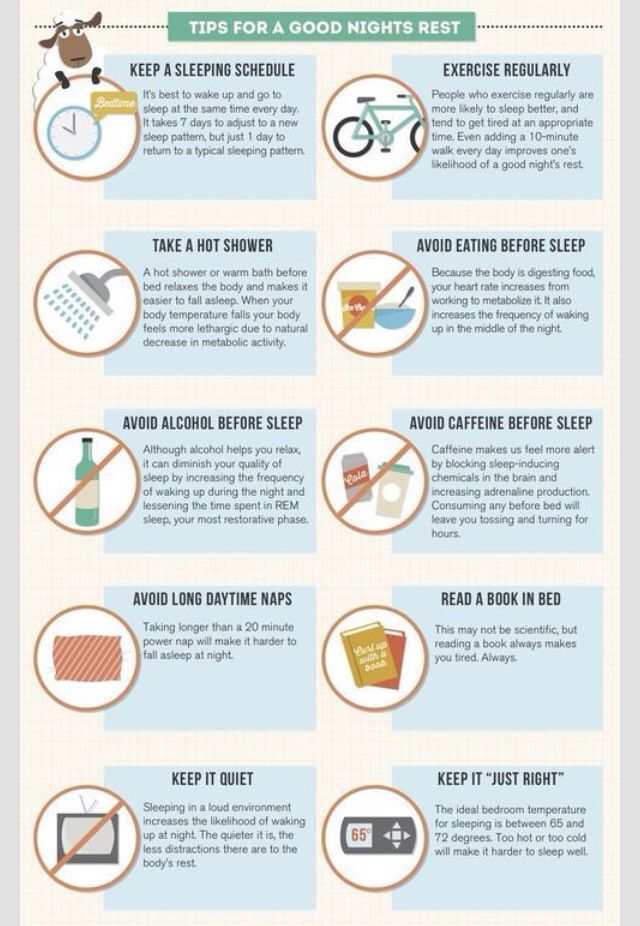 The longest and most important is night sleep. And its guarantee is peace and a sense of security. Therefore, all tips on how to quickly put a child to sleep come down to creating a harmonious and warm atmosphere. What is needed for this and what can help?
The longest and most important is night sleep. And its guarantee is peace and a sense of security. Therefore, all tips on how to quickly put a child to sleep come down to creating a harmonious and warm atmosphere. What is needed for this and what can help?
The mood of the baby directly depends on the state of the mother. If she feels rested, negative emotions and irritation do not unsettle her, then the baby will be relaxed. From the first months of life, the newborn shows its own temperament and features of the nervous system. Quiet or lively - you should not resist the characteristics of the child, it is better to accept them and adapt. So your bedtime ritual will form faster.
Pay close attention to how the child behaves
When the baby is tired and wants to sleep, he involuntarily gives signs to his parents. Over time, they become permanent habits: some rub their ears, others twist their hair. Noticing this signal, parents should immediately start laying. It’s better to postpone things: having missed this moment in the baby’s biorhythm, you can wait a few more hours for the next one, suitable for falling asleep. As usual, children signal that they want to sleep:
It’s better to postpone things: having missed this moment in the baby’s biorhythm, you can wait a few more hours for the next one, suitable for falling asleep. As usual, children signal that they want to sleep:
- They become slow, want to lie down on the floor or on a pillow.
- They rub their eyes and begin to yawn.
- Rubbing the ear or nose.
- They act up, refuse to eat and play, cry because of little things.
- They do not want to communicate with others, they are drawn to their parents.
- Overexcited, even aggressive.
Ventilate the room
Start preparing a place to sleep by ventilating the room. In a stuffy room, it will be difficult for a child to fall asleep. It is for this reason that babies fall asleep in the air - when it is easy to breathe.
Teach your baby: the bed is the place to sleep
The crib, of course, must be well equipped. A comfortable mattress and pillow, soft ironed bed linen will make your sleep comfortable. But it is even more important to teach a child from an early age: you need to sleep in bed. You should not start playing with a small child in the crib or leave the baby here for most of the day when he is awake so that sleep is not confused with activity.
But it is even more important to teach a child from an early age: you need to sleep in bed. You should not start playing with a small child in the crib or leave the baby here for most of the day when he is awake so that sleep is not confused with activity.
Align daily schedule
An important tip with a cumulative effect: in order for the daily routine to work for you, you need to strictly observe it for 3-4 weeks. Even if the baby will be capricious and resist. Gradually, a habit will be formed, the sleep and wakefulness regime will simply be maintained. The day of the baby should be eventful. Choose different activities: walks, games, communication with mom and dad. The child should be put to bed at the same time during the day. Do not be afraid to wake the child after a midday nap: if fatigue does not accumulate by the evening, it will not be easy to quickly put the baby to sleep. Babies up to 6 months old should have at least three hours from evening sleep to night sleep. Older children have at least four.
Older children have at least four.
Plan an evening ritual
Every action before sleep can be a signal bell for the baby's subconscious. You want your bedtime ritual to be pleasant and soothing. For a child, the familiar environment and the sequence of actions are important: feeding, bathing, massage and communication with mom. The system of rituals works if the age and characteristics of the child's nervous system are taken into account. What works for other children may not necessarily work for your son or daughter. When a stable sequence of actions “for the night” has developed, try to follow it and very carefully, carefully introduce new activities, other actions.
Here are five rituals that can help get your baby to sleep quickly:
- Saying goodbye to toys: gather all your favorite friends, say good night to everyone.
- Turn off the lights: go around all the rooms together and turn off the lights - this way you will let the baby know that the whole house is getting ready for bed.

- Watching the fish: if you have a home aquarium, you can watch the fish leisurely cut through the water - it's very calming.
- Sing a lullaby: choose a song that will soothe and lull your baby.
- Read a fairy tale: Hearing a good story before you go to bed is a great option.
Have a warm bath
Bathing itself will help prepare your baby for sleep. Your allies in this matter: warm water (the optimum temperature is 37 degrees), lush foam, caring hands of mom and a relaxing massage after bathing. The aroma of the foam you use is important. The My Sunshine line of bathing products includes Baju-bayushki foam with a proven combination of aromas that help set your child up for sleep. It contains natural extracts of lavender and rose oil. Thanks to them, the foam not only gently cleanses and moisturizes the skin, but also soothes and relaxes the baby. Hypoallergenic foam is recommended by pediatricians for daily use, so its aroma can become an additional "bell" - a signal to sleep. After the bath, use the "Bayu-Bayushki" cream. Thanks to its light texture, it is instantly absorbed. Many mothers note that after light strokes and application of the “Bayu-bayushki” cream, the children themselves easily fall asleep.
After the bath, use the "Bayu-Bayushki" cream. Thanks to its light texture, it is instantly absorbed. Many mothers note that after light strokes and application of the “Bayu-bayushki” cream, the children themselves easily fall asleep.
Feed your baby shortly before bedtime
After a hearty dinner, the child relaxes and falls asleep easily. But some children, on the contrary, become active after eating, and it may not be so easy to put them to bed after feeding. Therefore, you need to adjust the feeding time. If the baby calms down after eating, then you can feed him an hour before bedtime and immediately take a bath. Then he will feel comfortable in the water. Don't be alarmed if your baby has a hard time getting to bed and falls asleep for a long time while you feed him at night. Once you outgrow this period, his sleep will return to normal. If a baby at 2-4 weeks of life is disturbed by colic after eating, and because of this he cannot fall asleep, then it is worth shaking him in his arms for 10-15 minutes immediately after feeding, laying his tummy down.
Leave active games for daytime
The obvious advice is not to race around the apartment a few hours before bedtime. Even dynamic cartoons will not let you fall asleep right away.Perform a distraction
But what if the baby can not calm down and continues to frolic? Strictly give the command "to bed!" definitely not worth it. Try to accept the mood of the baby. Switch his attention from the currently impossible task of "falling asleep" to a new one. Show something interesting or play a quiet game. Wait a little when he starts rubbing his eyes. And tomorrow try to adjust the daily routine.
Try the old method - motion sickness
Measured movements soothe and even out the baby's heart rate. The child relaxes and falls asleep. But pediatricians advise not to abuse this method: the baby can get used to falling asleep only in the arms of his mother. We will have to form new rituals of falling asleep through tears at an older age.
Swaddle your baby
Babies up to four months old are easily reminded of the time spent in the warm mother's tummy.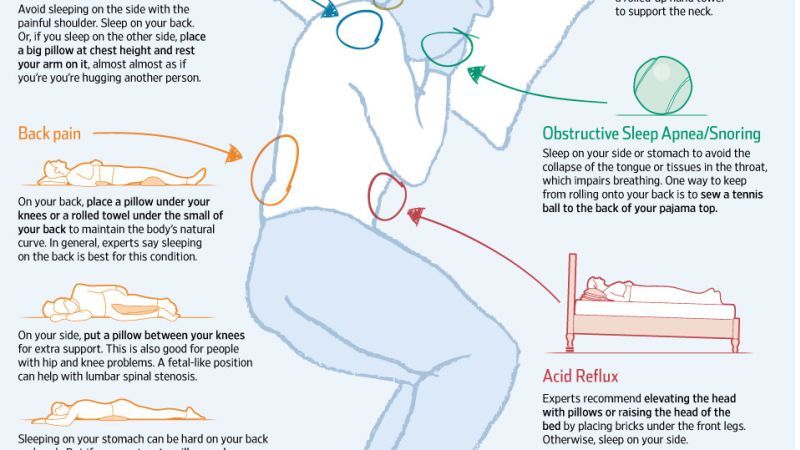 Do not swaddle too tightly, shake the baby a little, and he will fall asleep soon. Baby will be more comfortable sleeping in a diaper. The movements are not yet clearly synchronized with the reactions of the brain, the baby may begin to move in a dream and experience discomfort from this. Swaddling will save you from this. After four months, it will be more correct to find another method to put the baby to sleep.
Do not swaddle too tightly, shake the baby a little, and he will fall asleep soon. Baby will be more comfortable sleeping in a diaper. The movements are not yet clearly synchronized with the reactions of the brain, the baby may begin to move in a dream and experience discomfort from this. Swaddling will save you from this. After four months, it will be more correct to find another method to put the baby to sleep.
Sing a lullaby
The child relaxes and sleeps peacefully. But pediatricians advise not to abuse this method: the baby can get used to falling asleep only with a lullaby.
Put on relaxing music
Pediatricians recommend not to lull babies into silence. Otherwise, their sleep will be very sensitive, the baby will startle at every rustle. Turn on a calm melody: instrumental classics or sounds of nature will do. Another excellent auditory sedative is white noise.
Let me suck on a pacifier
Up to a year, the sucking reflex in children is one of the main ones.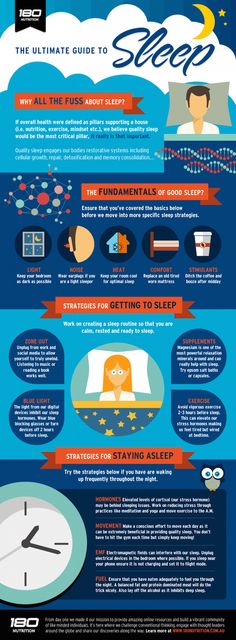 Therefore, the pacifier calms: a newborn with a pacifier is enough to shake a little, and he will quickly fall asleep. But do not forget to take out the pacifier from the sleeping baby.
Therefore, the pacifier calms: a newborn with a pacifier is enough to shake a little, and he will quickly fall asleep. But do not forget to take out the pacifier from the sleeping baby.
Make up a dream story
The advice is suitable for children who already speak well. Kids love fairy tales and easily "read" the right messages that parents put in the story. The heroes of your fairy tale should definitely be rewarded for falling asleep peacefully every night. For this, glory and universal approval await them. Even better, if the hero of the fairy tale is an "authority" - a favorite character from a book or cartoon. After all, most likely, the baby really wants to be like him.
Let your baby fall asleep by himself
There are author's methods on how to gradually accustom a child to fall asleep on their own. One method is called Entry/Exit: the mother puts the baby in the crib and goes to another room. The first time she leaves the baby alone for 5 minutes. At this time, it is important not to give in, even if the baby starts to whine. Then you can return to the room and calm the baby, and then leave again for 10 minutes. Gradually, the interval increases, on the 5th-7th day the child will begin to fall asleep on his own. How it works? Children realize that whims and tears do not work, and stop resisting. Given the previous advice (own bed, ventilated room, bathing, etc.), they reflexively fall asleep.
At this time, it is important not to give in, even if the baby starts to whine. Then you can return to the room and calm the baby, and then leave again for 10 minutes. Gradually, the interval increases, on the 5th-7th day the child will begin to fall asleep on his own. How it works? Children realize that whims and tears do not work, and stop resisting. Given the previous advice (own bed, ventilated room, bathing, etc.), they reflexively fall asleep.
Briefly about the author's methods
American pediatrician Harvey Karp offered parents a five-point algorithm, which, in his opinion, would quickly send the child to sleep. Here they are:
- rocking;
- swaddle;
- give a pacifier;
- lay on its side;
- turn on soothing white noise.
And the method of a pediatrician from Spain, Eduard Estiville, is suitable for children over one and a half years old. During the day, mom and dad should set up the baby for the fact that in the evening he will fall asleep on his own.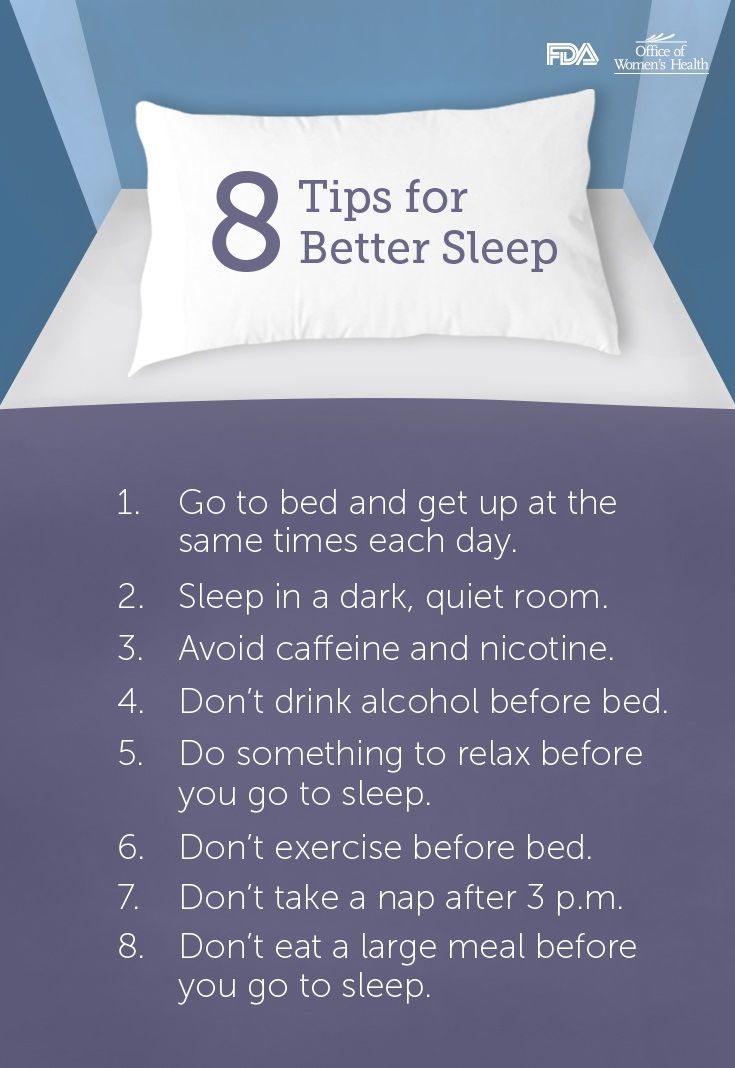 You need to repeat this attitude several times. When it comes to bedtime, parents again need to be warned that now they will leave him alone with them and will come to visit in a minute. After that, they really get up and close the door behind them. Estiville believed that it was imperative to endure these 60 seconds, even if the baby cries. Day by day, the period of time needs to be increased - gradually the child will get used to falling asleep on his own. This approach is ambiguous: he has as many followers as opponents.
You need to repeat this attitude several times. When it comes to bedtime, parents again need to be warned that now they will leave him alone with them and will come to visit in a minute. After that, they really get up and close the door behind them. Estiville believed that it was imperative to endure these 60 seconds, even if the baby cries. Day by day, the period of time needs to be increased - gradually the child will get used to falling asleep on his own. This approach is ambiguous: he has as many followers as opponents.
An ordinary father from Australia, Nathan Dylo, shared his own life hack online: he showed how he can put his son to sleep in less than a minute using a paper napkin. For some time, the man gently strokes the baby's cheeks, and he really quickly falls asleep. Experts explain: this is not know-how, it's just that children are sensitive to tactile contact - soft strokes soothe them.
Show your child love and affection
The easiest way to calm your baby is to pet him for a few minutes when he is already settled in the crib.